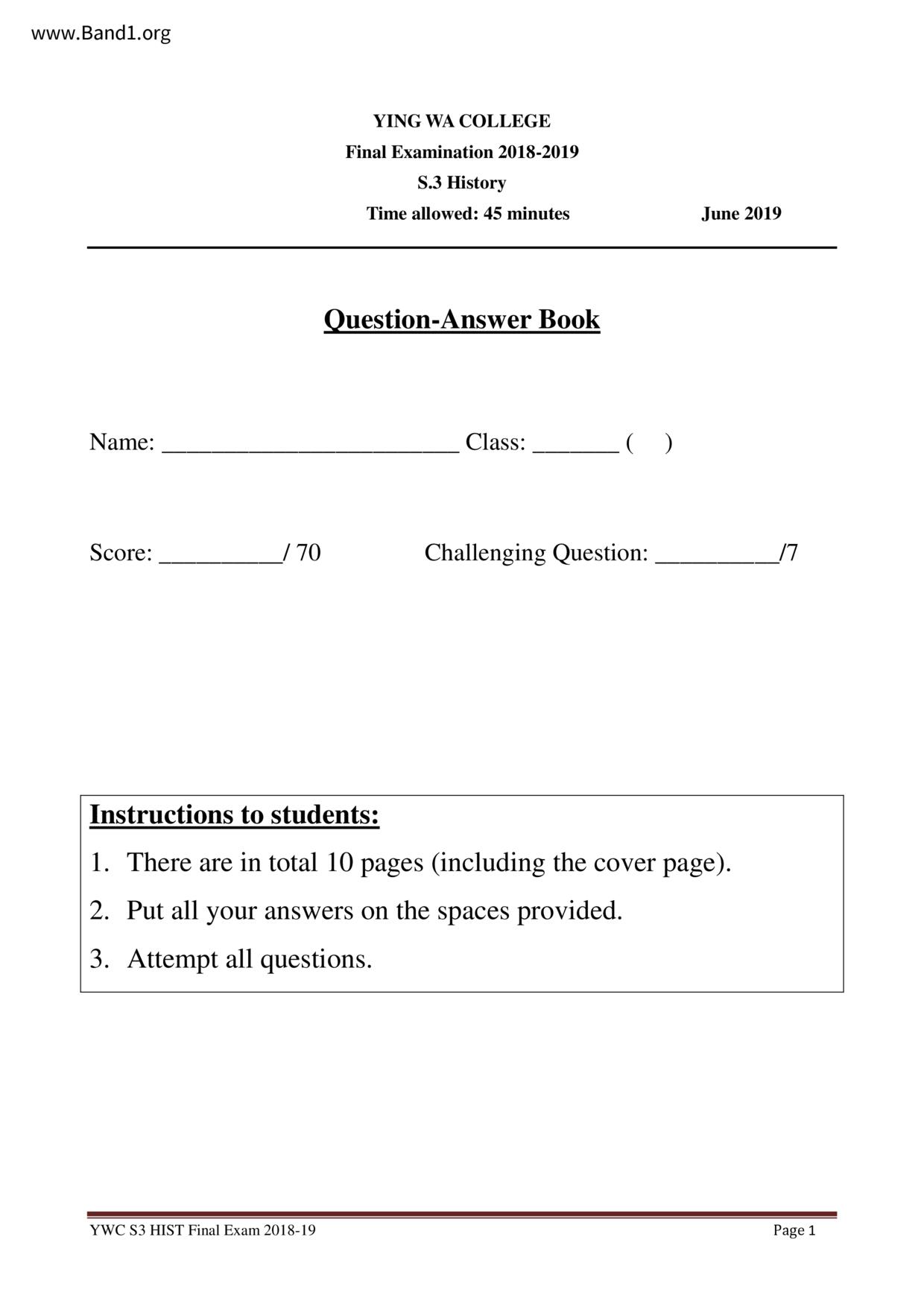香港中三西史試卷
編號:
7079
地區:
香港 (HK)
學校:
英華書院
(YING WA COLLEGE)
年級:
中三 (F3)
科目:
西史 (History)
年份:
2018-2019
學期:
2
卷種:
考試
檔案格式:
pdf
頁數:
13
檔名:
_History_Final_Examination_Question__Answer_Paper__2018_2019__Proofread_Copy_
▼ 圖片只作預覽, 如欲下載整份卷, 請按「免費成為會員」 ▼
英華書院 (名校卷)
 ▲ 圖片只作預覽, 如欲下載整份卷, 請按「免費成為會員」 ▲
▲ 圖片只作預覽, 如欲下載整份卷, 請按「免費成為會員」 ▲香港中三西史試卷 PDF
下載試卷只限會員尊享